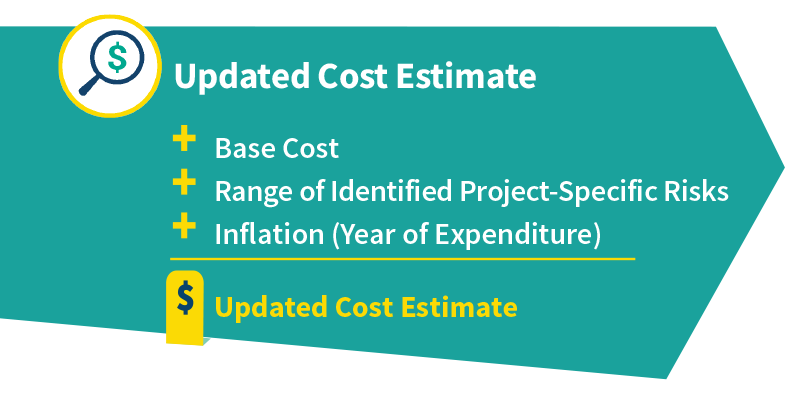Cost, Funding & Economic Benefits
Cost, Funding & Economic Benefits
The IBR program will provide ongoing tangible economic benefits across the region through more reliable travel times, reduced congestion, improved safety and quality of life, reduced emissions, and better access to goods and services.
In addition, the multi-year development and construction of the IBR program — and the potential infusion of billions of federal funds will provide our region with a once-in-a-generation economic opportunity.
How many jobs will be supported by the construction of IBR Program Investments?
The billions of dollars invested in the IBR Program will positively impact our local economy through jobs and spending. This includes:
-
Direct Impacts: Construction of a replacement bridge will generate tens of thousands of jobs across many industries, such as engineers and construction workers, as well as suppliers of materials.
-
Indirect Impacts: Indirect jobs are those that exist to produce the goods and services needed for the work being completed by those with direct jobs.
-
Tertiary Impacts: The economic impact multiplies when a job at a construction site then supports jobs in local restaurants, retail stores, and other places workers spend their wages.
For every $1 billion invested, our region could expect 5,500 direct jobs and 10,900 indirect jobs as a result. Earnings generated by new jobs will infuse billions of dollars into our local economy in the form of rent payments, utilities, and all the other ways that salaries and earnings flow through our community.

What is the Cost Estimate?
The 2022 IBR Program cost estimate reflects the components being analyzed in the Draft Supplemental Environmental Impact Statement. The 2022 cost estimate accounted for market conditions at that time, potential risks and cost saving opportunities, and costs associated with constructing the replacement bridge and other program components in the 2025 – 2035 timeframe. Revenue from a diverse range of sources is required, including federal funds, tolling, and state funds from both Oregon and Washington. Tolls will be used to help pay for construction, operations and maintenance of the facility, and to help improve travel reliability within the program corridor.

What is included
- Replacement bridge over the Columbia River
- Replacement of the North Portland Harbor Bridge
- One auxiliary lane southbound and northbound
- Extension of light rail from Portland to Vancouver and three new station locations
- Partial interchange on Hayden Island
- Full interchange on Marine Drive
- Access bridge from Hayden Island to Marine Drive
What is the Financial Plan?
The 2023 Financial Plan identifies potential funding sources and financing mechanisms, including federal funds, tolling, and state contributions. The Financial Plan identifies committed, anticipated, and prospective funding sources.
Potential funding sources include:
- Federal Competitive Grants ($1B prospective and $2.1B committed)
- $1.5 billion FHWA Bridge Investment Program Grant ($1.499 in construction funds awarded in 2024 and a $1 million planning grant awarded in 2022)
- $600 million USDOT Mega Grant
- $30 million USDOT Reconnecting Communities Grant, awarded in 2025 to City of Vancouver and WSDOT for improvements that are part of the IBR Program.
- Existing Oregon and Washington State Funding ($217M committed)
- Washington Funding Contribution ($1B committed)
- Oregon Funding Contribution ($1B committed)
- Toll Funding ($1.237B anticipated)
- The Oregon and Washington Transportation Commissions have toll rate setting authority; tolling will be implemented through a bi-state process.
- Toll revenue collected on the facility will be dedicated to the Interstate Bridge.
The funding assumptions in the Financial Plan will continue to evolve as the IBR program cost estimates are updated as the program moves further into design, and more information is known about anticipated and prospective funding.
How will Tolling Details be Determined?
Tolling for the IBR program is anticipated to include variable priced tolling with the goal of funding construction and facility operations and maintenance. Tolling will also improve reliability when travelers skip optional trips, choose other routes, modes of travel and time of travel.
Toll and policies for the IBR Program will be jointly set by the Oregon and Washington Transportation Commissions to support the toll funding amount identified in the program’s financial plan. In early 2024, both commissions approved an agreement that stands up an I-5 bridge bi-state tolling subcommittee. The subcommittee is made up of two commissioners from each state and will jointly recommend toll rates and policies, including potential discounts, to each state’s respective full Commissions.
In late 2024, the Oregon and Washington Transportation Commissions approved four toll rate scenarios to be studied in the next round of tolling analysis (referred to as a level 3 ‘investment grade’ toll traffic and revenue analysis) to confirm we can meet funding targets:
- Toll rates ranging from $1.55 to $4.70 per trip
- Truck toll rate multipliers ranging from 1.5x to 4x
- Low-income toll program with a 50% discount for registered individuals at or below the 200% federal poverty level
These scenarios do not identify final toll rates or policies but moves them forward for additional analysis. Once the analysis of these scenarios occurs, the number of toll scenarios will be reduced and made available for public review and comment. The commissions are anticipated to adopt toll rates about 8 months before tolling is estimated to begin on the facility. The earliest tolling is currently anticipated to start on the Interstate Bridge is in spring 2027.
To submit written public comment, please email info@bistatesubcommittee.org
You can learn more about the bi-state toll subcommittee, find meeting materials and view videos of past meetings on each commission’s website.
Oregon Transportation Commission toll subcommittee
Washington State Transportation Commission toll subcommittee
Sign up to receive updates on the bi-state subcommittee
Thank you for subscribing.
For More Information
We need your help.
Join us in our effort to replace the Interstate Bridge. Your feedback is important in shaping a solution.
